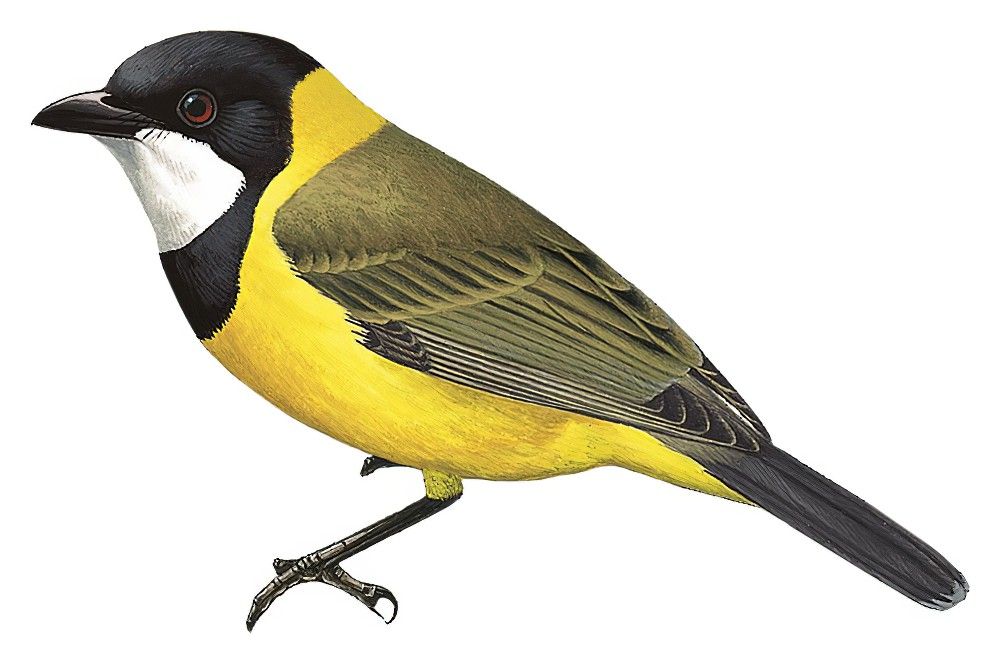Western Whistler / Pachycephala occidentalis

Western Whistler
SCI Name:
Protonym: Pachycephala occidentalis Proc.Linn.Soc.NewS.Wales 2 p. 212
Taxonomy: Passeriformes / Pachycephalidae / Pachycephala
Taxonomy Code: weswhi2
Type Locality: West Australia; restricted to Albany by Mathews, 1920, Birds Australia, 8, p. 209.
Author: Ramsay
Publish Year: 1878
IUCN Status:
DEFINITIONS
PACHYCEPHALA
(Pachycephalidae; Ϯ Golden Whistler P. pectoralis) Gr. παχυς pakhus large, thick; κεφαλη kephalē head; from the appearance of their large rounded heads the Indomalayan and Australasian whistlers were formerly known as 'thickheads'; "The interval betweeen the present groups and those of the Pari, where we entered on the family [Pipridæ], appears to be filled up by a race of birds peculiar to New Holland, and hitherto uncharacterized, of which the Muscicapa pectoralis, Lath. is the type*. These, uniting many external characters, at least, both of the Berry-Eaters and Flycatchers, exhibit also in general appearance a considerable resemblance to the Pari, and will be found, I conjecture, to be the connecting bond between all these groups. ... * Mr. Swainson has lately formed this group into a genus by the name of Pachycephala. Nov. 1824." (Vigors 1825); "Genus. PACHYCEPHALA*. Swains. MSS. ... Caput tumidiusculum. ... In their general appearance some of the species exhibit a resemblance to the birds of the genus Procnias, Ill., while by the puffed-out appearance of the feathers about the head, we trace an approximation to some of the Linnean Pari. ... * παχυς crassus, and κεφαλη caput" (Vigors & Horsfield 1827).
Var. Pachycephalus.
Synon. Alisterornis, Gilbertornis, Hylocharis, Hyloterpe, Lewinornis, Malacolestes, Mattingleya, Musciterpe, Muscitrea, Mutevodia, Pachycilodryas, Psaltricephus, Pucherania, Timixos.
occidentale / occidentalis
L. occidentalis western < occidens, occidentis west < occidere to set. This toponym was frequently given to taxa discovered in locations west of previously known populations.
● Cocal, Western Andes, Colombia (Dysithamnus).
● Jamaica; ex “Onocrotalus” or “Pelecanus fuscus” of Sloane 1725, “Pelican of America” of Edwards 1747, and “Pelecanus” of Browne 1756 (Pelecanus).
● TL. Day Dawn, Western Australia; "Westralian Wedgebill" (Mathews 1912) (Psophodes).
UPPERCASE: current genus
Uppercase first letter: generic synonym
● and ● See: generic homonyms
lowercase: species and subspecies
●: early names, variants, mispellings
‡: extinct
†: type species
Gr.: ancient Greek
L.: Latin
<: derived from
syn: synonym of
/: separates historical and modern geographic names
ex: based on
TL: type locality
OD: original diagnosis (genus) or original description (species)












